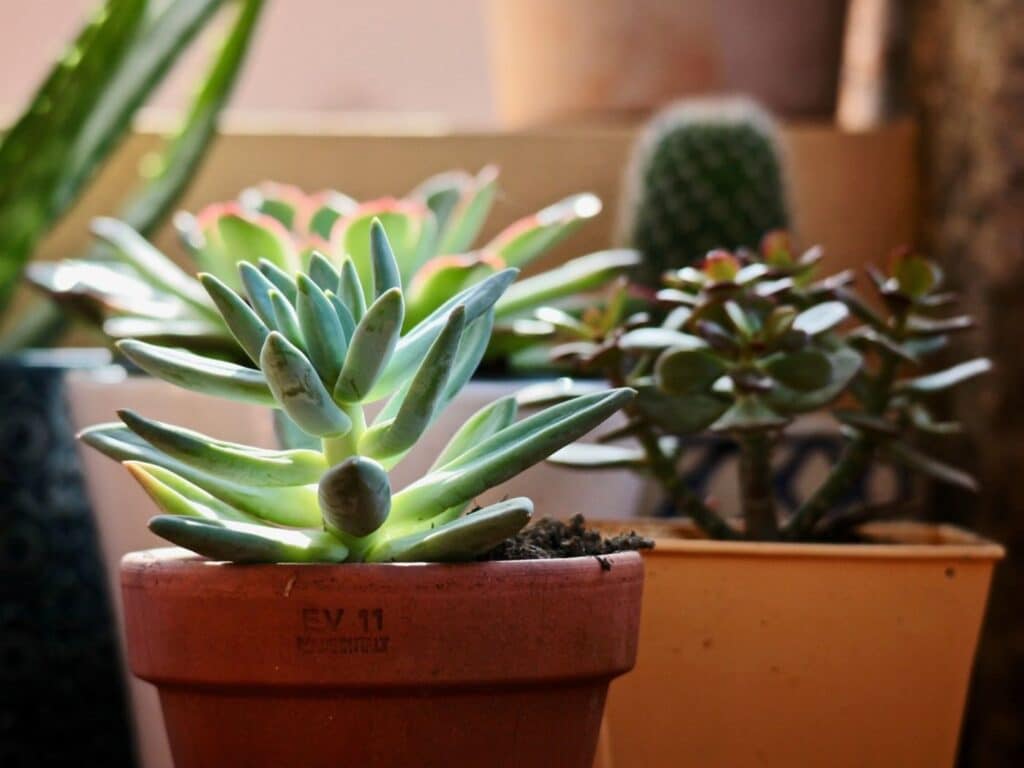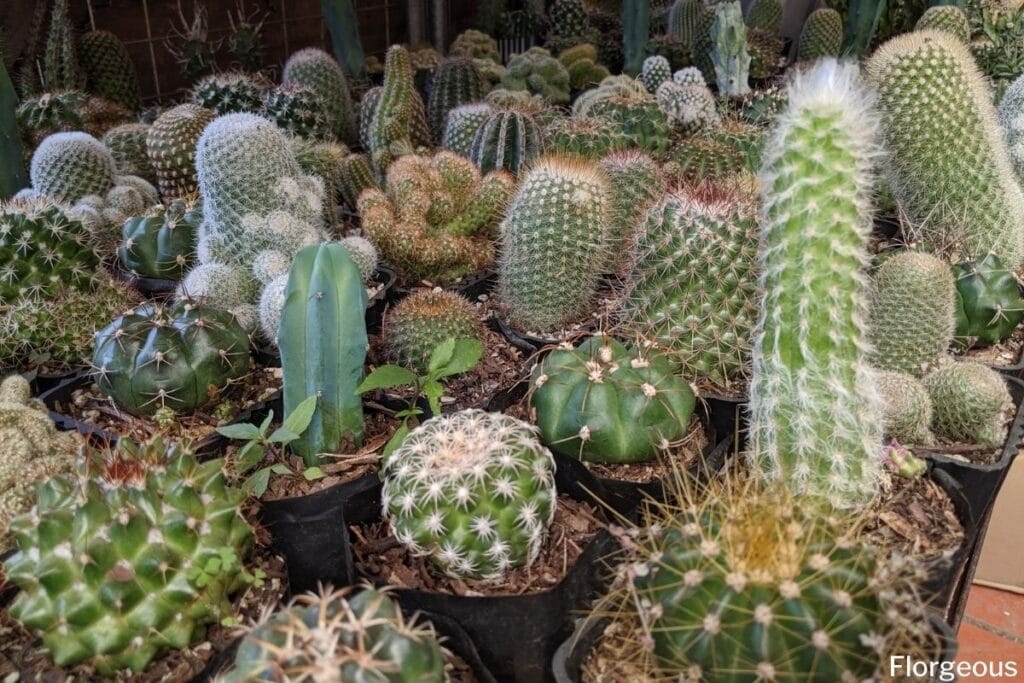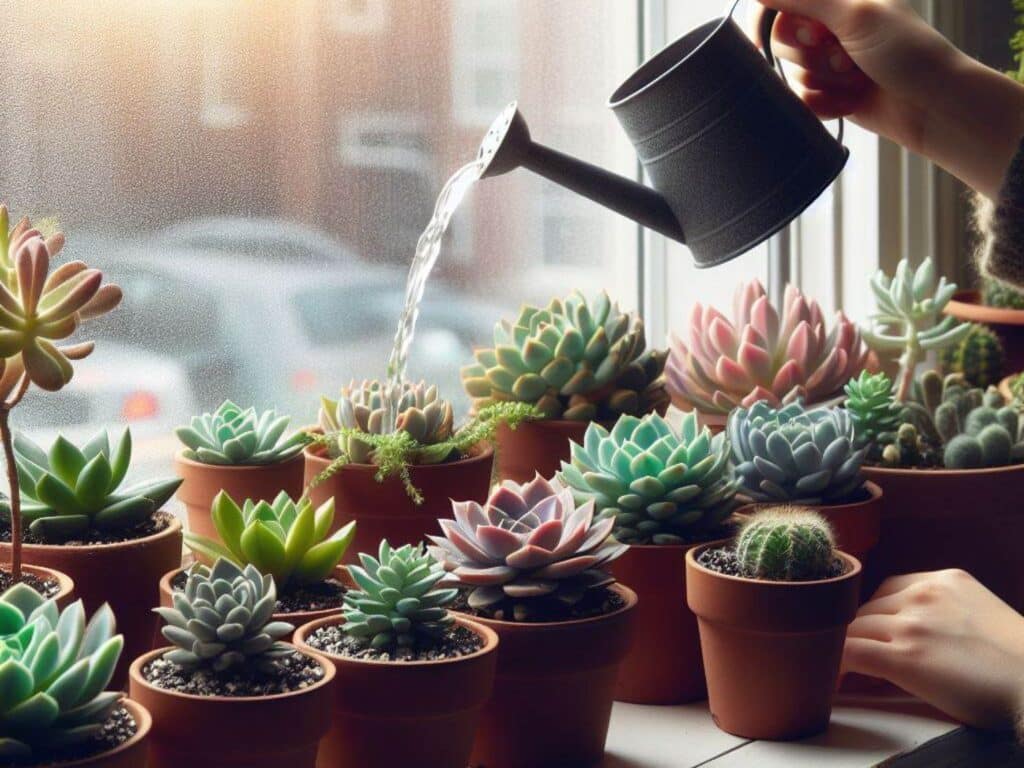You’ve lovingly tended to your succulent collection, watering them with care and ensuring they bask in just the right amount of sunlight. But despite your best efforts, you’ve noticed your plants starting to look a little worse for wear.
Could you be overwatering them? It’s a common plight many succulent enthusiasts face, leading to droopy, discolored leaves and an overall unhappy plant. Understanding the signs of overwatering, its effects on your succulents, and how to correct course is crucial to reviving your green friends.
Overwatered succulents can go from thriving to struggling in a short amount of time, but with the right knowledge, you can pinpoint the problem and implement solutions.
This article will guide you through identifying the telltale signs of overwatering, understanding why it’s harmful, and, most importantly, how to save your waterlogged plants. Let’s dive into transforming your overwatered woes into a success story, ensuring your succulents remain vibrant and healthy.
Recognizing the Symptoms of an Overwatered Succulent
Caring for a succulent may well seem like a breeze, but too much love, in the form of water, can lead your plant down a slippery slope. Recognizing the early signs of overwatering is key to pulling your plant back from the brink. Below, we’ll walk through the tell-tale symptoms your succulent is screaming for a drier environment.
Signs in Leaves
First things first, let’s talk leaves. An overwatered succulent often shows its displeasure through its leaves. You may well notice they become soft, bloated, and may even take on a somewhat translucent appearance.
It’s like they’ve had one too many sips. Another sign to look out for is a change in color: leaves may well turn yellow or become blackened, indicating rot. If your plant’s leaves start resembling mushy peas, it’s time to cut back on watering.
Stem Changes to Look For
Moving on from the leaves to the stem, things can get a bit grim. A healthy succulent stem is hardy and vibrant, but overwatering turns it soft and discolored. The stem may well even begin to rot, which is a serious SOS signal from your plant.
If the base of the stem feels soft or mushy to the touch, you’ve got a clear indicator the plant is drinking more than its fair share. These changes signal that immediate action is necessary to save your succulent from an untimely demise.
By keeping an eye out for these symptoms, you can catch overwatering early and take steps to rectify the issue. Remember, succulents are desert dwellers at heart; they thrive with less, not more. So, show your love through restraint in watering, and your succulent will thank you with robust health and beauty.
The Consequences of Excess Water

When you shower your succulents with more affection in the form of water than they need, it may well not end well. Let’s dive into what happens when these drought-loving plants get more than their fair share of water.
Root Rot and Its Implications
Root rot is a real party pooper for succulents. This condition kicks in when overly wet conditions hinder the roots from breathing, leading to decay.
Imagine putting on a wet sock and not changing it – uncomfortable, right? That’s how succulents feel with too much water. The roots can’t take up nutrients or support the plant, leading to a downward spiral of health. If you spot black or mushy roots, you’ve got a case of root rot on your hands.
How Overwatering Affects Succulent Growth
Too much water does a number on succulent growth, causing more harm than good. It’s like feeding a cat a diet meant for a dog; things just don’t work right. Overwatered succulents often become soft, discolored, and may even drop leaves prematurely.
This stress can stunt their growth or cause them to stretch out weirdly as they search for the sun, thinking they’re in a darker, wetter environment than they like. Ultimately, these plants end up looking more pitiful than picturesque, far from the robust beauties you’re aiming for.
Rescue Tactics for Overwatered Succulents

Steps to Save a Waterlogged Plant
First off, don’t panic. Overwatered succulents can bounce back with some quick action on your part. Begin by halting any watering immediately. Succulents retain moisture, so they won’t miss it for a bit.
Next, carefully remove the plant from its pot to assess the root condition—healthy roots look white and firm, while brown and mushy ones signal trouble. Trim off any damaged roots with a clean, sharp pair of scissors. This step can feel a bit like surgery but think of yourself as a plant doctor, doing what’s necessary for your green patient’s recovery.
Lastly, let the plant dry out for a day or two before repotting in fresh, dry succulent mix. This moment of rest is crucial for helping the plant recover from its ordeal.
When to Repot Your Succulent
Repotting time is crucial. If after your initial assessment and a brief drying period, the succulent’s roots still seem overly soggy or damaged, it’s time to consider repotting.
Choosing the right moment for this is more art than science; if the soil stays wet for too long even without additional watering, or the roots have begun rotting, don’t delay. Find a pot with ample drainage, and fill it with a fast-draining succulent mix. Succulents love this kind of environment because it mimics their natural, arid habitats.
After repotting, resist the urge to water for just a little while, allowing your succulent to adjust and start healing in its new home. Succinctly, your watchword during this time is patience, as your plant embarks on its journey back to health.
Preventative Measures for Healthy Succulents
Correct Watering Techniques
Getting the watering right is key to keeping your succulents thriving. Instead of a regular schedule, water only when the soil completely dries out.
This strategy, known as “soak and dry,” involves giving the plant a good drink and then letting it be until the next watering. Use your finger to test the dryness of the soil; if it’s dry at least an inch deep, it’s time to water.
Over time, you’ll notice your succulents showing you when they’re thirsty—leaves may start to wrinkle slightly. That’s your cue to water, not a moment sooner.
Recovering from Overwatering
After spotting the soggy signs of overwatering your succulent, it’s time for a little plant TLC to get back on the dry side. Let’s dive in.
Encouraging Healthy Root Regrowth
First things first, give your succulent a break from the drink. Too much water isn’t doing it any favors. Once you’ve halted watering, gently remove your plant from its pot to get a good look at the roots.
Healthy ones are firm and white, while overwatered roots may well look brown and mushy. Go ahead and trim any damaged roots with clean, sharp scissors. It’s kind of like giving your plant a haircut – out with the old to make way for the new.
Next, grab some fresh, dry succulent mix and a pot with proper drainage. Repotting your succulent provides it with a fresh start. Avoid watering it right after repotting. Yes, you heard that right – keep that watering can at bay.
Succulents are the camels of the plant world; they like their environment on the dry side. Let the plant acclimate to its new home and show some root growth before its next watering session. Patience is key here.
Monitoring Your Succulent’s Recovery
Keeping an eye on your succulent’s recovery journey is crucial. You don’t need to hover like a helicopter parent, but a little vigilance goes a long way. Pay attention to the leaves. If they start perking up and embracing their natural plump and colorful state, you’re on the right track.
Remember, recovery doesn’t happen overnight. It may well take a few weeks for your succulent to bounce back fully. During this period, resist the urge to water unless the soil is completely dry. If you’re questioning whether it’s time to water, wait another day. Succulents thrive on neglect, so when in doubt, it’s better to underwater than overwater.
In this journey of succulent recovery, practice makes perfect. It’s a delicate balance, but don’t sweat the small stuff. Sometimes the best thing you can do is learn from the mishap and adjust your care routine accordingly.
After all, gardening is as much about growing yourself as it is about growing your plants. Keep at it, and soon your overwatered succulent will be thriving once again, ready for its next photo op.
Up next: Overwatered Christmas Cactus: Revival Tips & Long-Term Care







